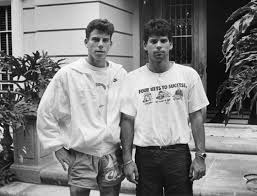Introduction
The case of Erik Menendez, along with his brother Lyle, remains one of the most notorious and controversial true crime stories in the United States. Their conviction for the 1989 murders of their parents, José and Mary Menendez, sparked significant discussion regarding the justice system, mental health, and the influence of upbringing on criminal behaviour. As ongoing discussions and media portrayals continue to emerge, understanding this case is vital for grasping the complexities of crime and punishment.
Background of the Case
On August 20, 1989, Erik and Lyle Menendez killed their parents in their Beverly Hills home, shooting them multiple times in what was described as a brutal and premeditated act. Initially, the brothers presented an alibi that raised no suspicion, claiming their lives were shattered by the loss of their parents. However, as investigators probed deeper, disturbing details about their upbringing came to light. The brothers alleged years of emotional and sexual abuse at the hands of their father, which became a central theme during the multiple trials that followed.
The Trials
The Menendez brothers’ first trial, which began in 1993, ended in a hung jury, highlighting the divisive public opinion on the case. During their second trial in 1995, their defense team introduced a psychological defence, arguing that the brothers acted out of a learned response to years of abuse. Ultimately, the jury convicted them on two counts of first-degree murder, and they were sentenced to life in prison without parole.
Controversy and Cultural Impact
The Menendez case raised critical questions about mental health and the justice system’s handling of abuse victims. Many experts weighed in on whether the brothers should have received a more lenient sentence considering their traumatic past. Subsequent television dramas, documentaries, and podcasts have further kept the case in the public eye, highlighting its complexities and the emotions surrounding it.
Conclusion
Today, the Erik Menendez case continues to resonate, opening discussions on the intersections of childhood trauma, mental health, and criminal responsibility. As debates about the case linger, one thing remains clear: it has permanently shaped the landscape of true crime in contemporary culture. The case serves as a reminder of the need for continued dialogue on the effects of abuse and the importance of understanding human behaviour in the context of the law. For many, Erik Menendez will always be more than just a convicted murderer; he embodies the poignant conversations about victimhood, justice, and the consequences of silence.
